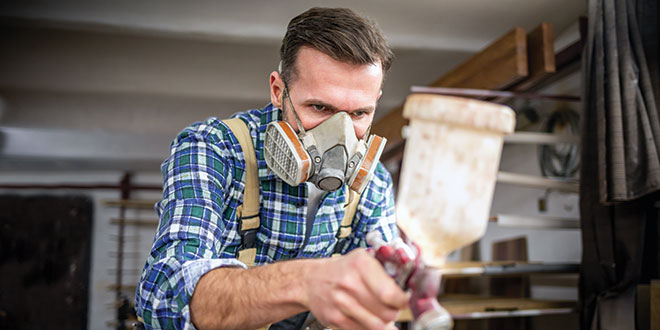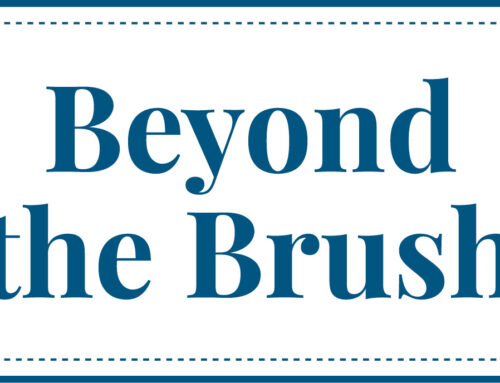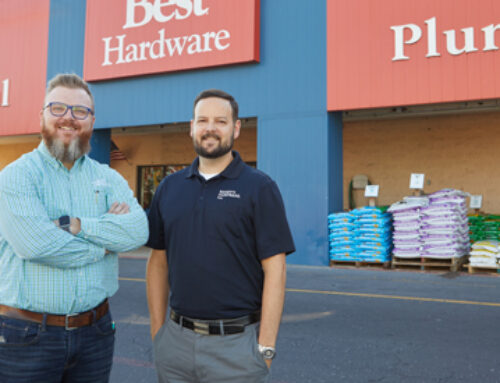While the COVID-19 pandemic made mask usage commonplace for the general public, masks and respirators have long been an everyday tool for painters. DIYers and professionals both rely on paint stores to stock safety gear like masks and respirators and provide information on the best products to keep them safe during any job.
Just like public health officials taught us not all masks are created equal when protecting against COVID-19, different masks are best suited for different painting and preparation tasks.
Even though masks, respirators and other PPE supplies make up a small percentage of sales for most paint stores, it’s important for employees to be educated on the types available and how to sell them.
PPE such as safety gloves, coveralls and eyewear generally come in one type, making it easy to recommend the right product to customers. When it comes to masks and respirators, however, the choices are many.
Whether your customer is a professional contractor or a DIYer, both groups benefit from using a mask or respirator but might not realize the importance of choosing the right one to protect them on the job and minimize potential future health issues.
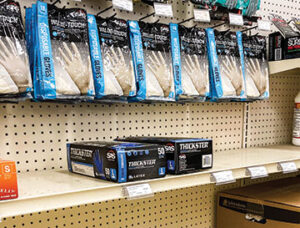 Breaking Down the Types
Breaking Down the Types
The type of mask a painter needs depends on the job they are performing and the toxicity of the type of paint or solvent they are using.
According to the U.S. Occupational Safety and Health Administration (OSHA), water-based latex paints generally do not cause health issues, while oil-based paints contain hydrocarbons and volatile organic compounds (VOCs), which can cause breathing issues. The chemicals in paint thinners and other solvents can also be damaging to the respiratory system if inhaled.
Your employees should know what masks and respirators to recommend depending on the type of paint or solvent a customer is using. They should also be able to educate customers on proper mask maintenance and finding the right fit.
Be sure you’re always consulting the right source for guidance. Manufacturers include instructions for use and provide guidance for what each mask can be used for and protects against.
Just the Basics: Fabric Masks
Fabric masks provide the lowest level of protection, reducing exposure to solid particles like dirt and dust but offering no respiratory protection against hazardous gases or vapors.
This type of mask is typically disposable and is suitable for light sanding jobs. It offers some protection against paint odors when painting with water-based latex paints.
A Step Up: Respirator Masks
Providing another layer of protection, respirator masks, also called particulate or dust masks, come in numerous varieties. OSHA states that to be considered a respirator, it must include a filter of some type, be approved by the National Institute for Occupational Safety and Health and state the organization’s rating on the product.
The now well-known N95 mask is one type of particulate respirator. It includes a valve that filters at least 95 percent of airborne particles like dust from sanding and fumes from paints and solvents.
If your customers are concerned about paint fumes, a paint fume respirator specifically blocks fumes and prevents respiratory exposure to chemicals in the paint. It also works well for light sanding. Respirator masks are also available specifically to work with fiberglass.
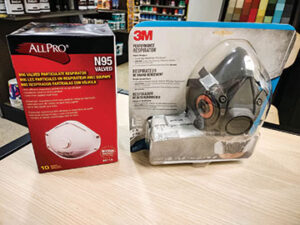 Top of the Line: Combination Respirators
Top of the Line: Combination Respirators
Jeff Goemaat, product manager at Miller Paint, says his employees recommend a combination respirator to painters working with solvent-based paints that have strong fumes and toxic vapors.
“Painters spraying latex paint are generally just wearing respirator masks, which keep them from inhaling the paint,” Goemaat says. “Fumes become an issue when painters get into the solvent-based paints, and that’s when we’ll sell them up to a combination respirator.”
Typically, these respirators are reusable and protect against most of the vapors and gases that painters encounter.
Several types of combination respirators can also be used for particulates by trading the cartridge for a carbon filter, and some offer both a filter and a cartridge to protect against both particulates and vapors or gases.
Combination respirators offer the highest level of protection and come in several varieties, including half-face, full-face and air-purifying respirators, which filter the user’s inhaled air before they breathe it in.
Combination masks generally require a filter or cartridge that the user should change regularly. OSHA provides a color-coded system so users know what cartridge protects against what hazards.
While the OSHA cartridge color chart includes 16 categories, painters will generally use cartridges with black, yellow or brown color codes, which work against organic vapors, or orange and teal codes, which protect against particulates.
Offering Ample Options
Rather than stocking just one type of respiratory PPE, you should consider carrying several different varieties. Respirators aren’t always one-size-fits-all, and having several options available to customers lets them choose the one that fits best.
Each respirator also differs in the features it offers. These features can make a mask more comfortable to certain wearers and make them more likely to wear the mask properly.
The key to recommending the right respirator to the customer starts by asking the right questions to determine the scope of the project, their end goal and their experience.
Fit and Maintenance Education
Providing your employees with basic training on painting safety and PPE goes a long way with customers. Along with educating on the different types of masks and what they protect against, employees should be able to provide key information on how to find the right fit in a mask or respirator.
Tight-fitting respirators require fit testing, which confirms a respirator fits the user’s face properly and provides a tight seal. The major respirator manufacturers sell multiuse fit-testing kits so your employees can perform those tests for customers in the store. Several of these manufacturers also run fit-testing certification programs that train employees how to perform fit testing on customers using the kits.
Miller Paint, which operates 53 stores in three states, has all of its employees go through training so they can perform respirator fit testing for customers and educate on proper fit.
Goemaat says fit testing is important to educate the general public, who may not be as knowledgable about respirators, and assure the respirator actually protects the user.
“Many people don’t realize that facial hair can affect the fit and effectiveness of a respirator,” Goemaat says. “Any mask that doesn’t provide a tight seal won’t properly protect the user.”
Employees who are trained in fit testing, or at least educated on the importance of a good fit, should be able to direct any customer to the right product based on each customer’s needs.
When it comes to PPE, many contractors and businesses focus on cost rather than comfort, but owners should look at comfort as a need-to-have, rather than a nice-to-have. Respirators and masks that aren’t worn properly because they don’t fit well won’t do the painter any good.
Employees should also educate customers on maintaining and replacing masks and respirators. Painters should check reusable and throw-away masks for damage before each use and replace filters and cartridges according to the manufacturer’s guidelines.
Disposable respirators need to be thrown away and replaced when they become damaged, dirty or difficult to breathe through. Reusable respirators, including filters and cartridges, need to be replaced based on the manufacturer’s schedule.
Navigating Supply Issues
While the supply chain issues that COVID-19 caused are a once-in-a-lifetime event, other supply issues can occur at any time. Learning how to overcome these issues will pay off now and in the long run. Even a year after the initial COVID-19 shutdown, paint stores are still having challenges stocking masks and respirators.
Southwestern Paint Co. in Houston, Texas, has struggled to keep its normal supply of masks and respirators in stock. Jim Rowley is the purchasing manager for Southwestern Paint’s seven locations, and he purchases whatever is available at the time. He has been able to find medical and cloth masks to give customers some other options for face coverings.
“Some manufacturers have come out with a KN95 mask and we’ve been stocking those,” says Rowley. “When you find something, that’s what you bring in.”
Miller Paint has experienced the same supply chain issues, not just with masks, but also with gloves and with disposable coveralls. Goemaat says disposable coveralls have also been hard to find because the same material used for the coveralls also goes into making dust masks. He has opted for brands they don’t normally carry.
“It’s been a challenging year and there’s nothing our painters are used to that is available right now,” says Goemaat. “We were able to secure some KN95 masks and found an LED manufacturer that started making masks. Basically, we’re stocking any mask and safety equipment we can find.”
Even when supply chain issues are resolved and masks aren’t such a hot commodity, it’s helpful to have other options to offer customers when you can’t stock your normal choices because painters rely on masks and respirators to keep them safe on the job.


